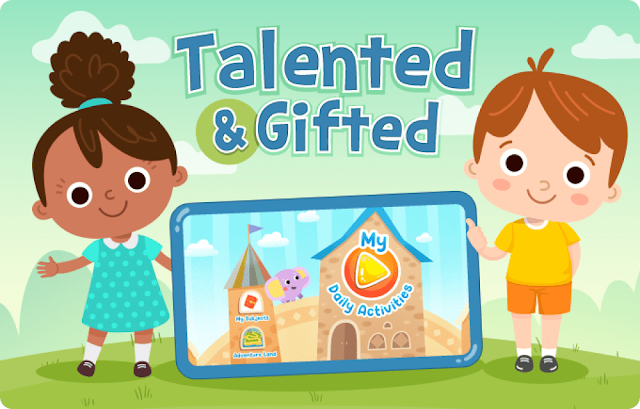Knowing English is essential for kids who are new to the country because it allows them to communicate with others in their new community and access educational and career opportunities. Learning English as a second language can be challenging, but with patience and the right techniques, young English language learners (ELLs) can thrive. Moreover, their brains are still developing and are more receptive to new information, so they will pick up a new language quite quickly. Let's explore what strategies can be used to help ELLs succeed.
Pull-Out and Push-In Services: When a teacher with certification to teach English Language ELLs takes a student out of a regular class for a small group lesson during English Language Arts (ELA) class, it's called "pull-out" services.
On the other hand, Push-In services involve an assigned staff member who will co-teach with the regular education teacher, allowing them to create lesson plans for the entire class while the ESL instructor provides assistance to students who need it.
Resource Rooms. If a student has limited or no knowledge of English, they require considerable support. To address this, many schools offer a specialized class where students with similar language proficiency work with an ESL instructor. This class may completely replace the regular classroom until the student has acquired enough language skills.
Buddy System: Teachers match ELL students with a peer who is a natural leader and good ast learning to learn daily greetings, informal phrases, and improve grammar through their interactions.
Using Apps. Both teachers and parents can use apps to help kids learn English and provide interactive and engaging activities that make learning fun. Try out the Talented and Gifted app by Kids Academy. There you can find over 1,300 English learning materials for children that will help them master ABCs, phonics, reading, writing, grammar and vocabulary.
The app features interactive worksheets that employ a neural network that has been trained to recognize correct and incorrect answers. Different types of checks are used to score points, such as letter or number tracing, object circling, ticking boxes, going through labyrinths and more. This range of checks is enough to create a variety of tasks, so the child is not bored when doing worksheets on the same topic.
If a task is done correctly, the worksheet will be highlighted green, and the learner can move on to the next task. Measures have been taken to prevent the learner from feeling upset if they make any errors. Friendly voice-overs provide support and positive feedback, encouraging students to try again if they don't pass the task.
The worksheets are designed to be age-appropriate, as you can see from these English worksheets for grade 1, and they provide children with simple instructions and colorful illustrations.
Apart from worksheets, young learners will benefit from using other resources, such as instructional videos that are linked to the worksheets, engaging games, and quizzes. To get better results, you are recommended to use an iPad or a similar tablet device.
Learning English as a second language may feel challenging; however, there are many useful tips and approaches that can be easily implemented to assist English language learners in the most effective manner. What is more, with the convenience of using apps on mobile devices, kids can learn English anytime, anywhere.
FOLLOW MY ADVENTURES ON YOUTUBE @PinoyAdventurista
Thank You For Sharing! |





0 comments :
Post a Comment
Traveling soon?! Use my AGODA Promo Codes PINOYAGODA (for hotel discounts) and ADVENTURISTA (for tours and activities).
Looking for Budget Travel Guide Blogs, Hotel Reviews, and Sample DIY Itineraries?
Welcome to Pinoy Adventurista, "Your Next Ultimate Adventure Starts Here!"
Pinoy Adventurista is one of the Top Travel Blogs in the Philippines and the World. In 2013, he visited all the 81 provinces in the Philippines.